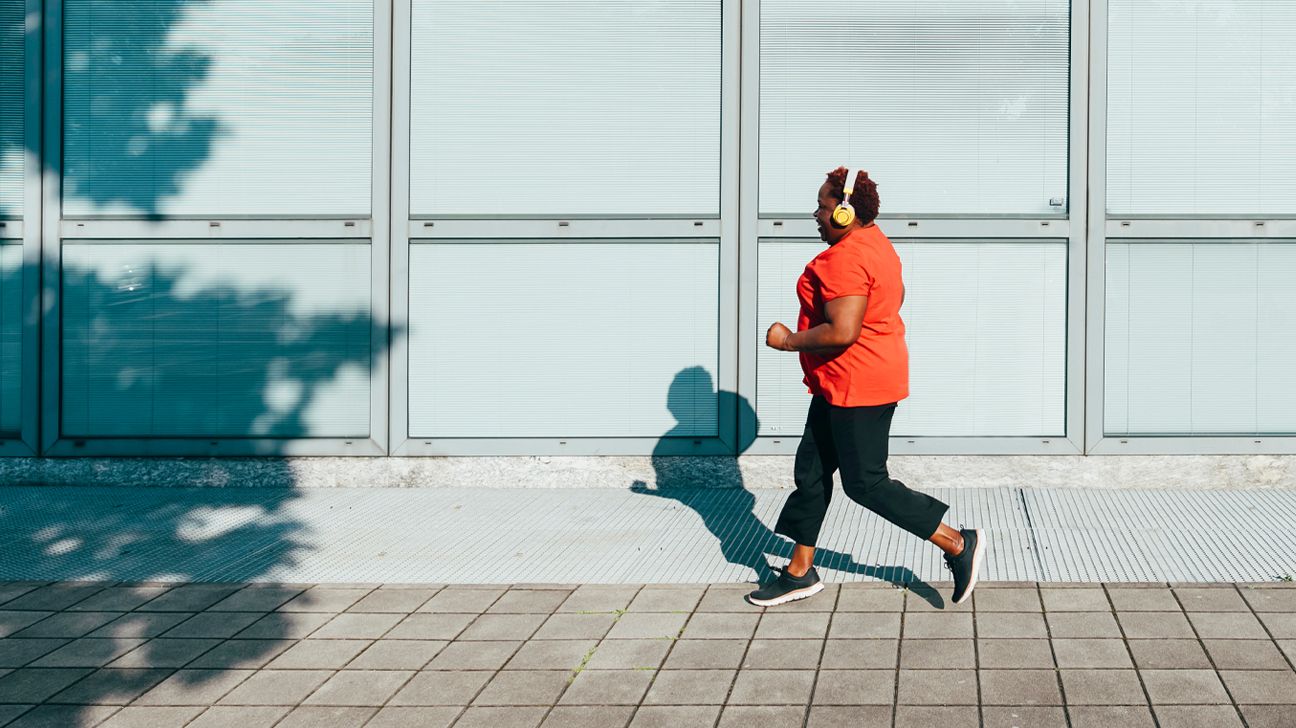 New research finds that exercise can help protect against bone loss while taking GLP-1 drugs for weight loss. Westend61/Getty Images
New research finds that exercise can help protect against bone loss while taking GLP-1 drugs for weight loss. Westend61/Getty Images- People who were treated with the GLP-1 drug liraglutide and did an exercise program lost weight and body fat but were able to preserve their bone health.
- Both liraglutide and exercise helped people maintain weight loss, but exercise minimized the loss of bone density.
- Other research shows that certain types of exercise can strengthen bones, even in people not trying to lose weight.
Losing weight can help people who are living with obesity or overweight and reduce their risk of type 2 diabetes, sleep apnea, heart disease, and other health issues. But weight loss can also lead to bone loss.
This is a concern as more people are taking GLP-1 receptor agonists such as Ozempic, Wegovy, and Zepbound to help them lose weight.
“Bone mineral density should be a serious consideration, given that we reach our peak bone mass by age 30 and then start to lose bone mass as we move beyond our 30s,” said Jennifer Sacheck-Ward, PhD, a professor of prevention and wellness at George Washington University’s Milken Institute School of Public Health.
“If taking GLP-1 receptor agonists accelerates this loss, then we will have more individuals who are at increased risk of serious fractures, and at younger ages,” she told Healthline.
New research, though, suggests that exercise can help preserve bone health in people being treated with a GLP-1 drug.
In the study, researchers found that people who were treated for a year with liraglutide (sold under the brand names Saxenda and Victoza) and did a program of moderate- to-vigorous-intensity exercise had similar changes in bone mineral density as those who didn’t undergo any treatment.
This was despite people in the combination liraglutide and exercise group losing more weight than people treated with liraglutide alone or exercise alone.
The study was published June 25 in JAMA Network Open.
GLP-1 drugs and bone density
The study was carried out from 2016 through 2019 in Denmark. It included 195 people ages 18 to 65 who were living with obesity but not diabetes. The average age of participants was 43, and nearly two-thirds were female.
Participants first followed a low calorie diet for 8 weeks, which provided 800 calories per day.
In general, adults not trying to lose weight need around 1,600 to 3,000 calories per day, although this varies depending on factors such as age, sex, size and activity level.
Next, researchers randomly assigned people to one of four groups for 52 weeks: a moderate- to vigorous-intensity exercise program, daily injections of liraglutide, a combination of exercise and liraglutide, or the non-treatment (placebo) group.
Participants underwent DEXA scans to measure bone mineral density in their hip, lower spine and forearm. These scans were done before people started the low-calorie diet and again at the end of the 52-week treatment period.
On average, participants lost 29 pounds while on the 8-week low calorie diet. During the 52-week treatment period, people in the placebo group regained weight and lost 15 pounds overall.
Those in the exercise and liraglutide groups maintained their weight loss (25 to 30 pounds overall), and people in the combination group lost additional weight (37 pounds overall).
The combination group also had larger amounts of fat loss compared to the other groups.
In addition, the groups saw different changes in bone mineral density. In the combination exercise and liraglutide group, bone mineral density in the hip and lower spine was similar to the placebo group — meaning this group maintained bone health.
The liraglutide group saw a greater decrease in bone mineral density in the hip and lower spine compared to the exercise group. This suggests that exercise can help prevent bone loss.
Also, both the exercise and combination groups saw an increase in bone mineral density in the forearm.
One limitation of the study is that researchers excluded people over age 65 and those with other chronic health conditions. Thus, the researchers write that the results may not apply to people with diabetes or older adults.
Exercise is recommended for better bone health
Spencer Nadolsky, DO, an obesity and lipid specialist and medical director of WeightWatchers, said loss of bone mineral density is always a concern when intentionally losing weight.
But “I wouldn’t be concerned about GLP-1 medicines causing more than expected losses in bone densities with the amount of weight lost,” he told Healthline.
“Having said that, I always recommend resistance training for those who are trying to intentionally lose weight in order to minimize bone loss,” he said.
This is particularly true for people using a GLP-1 drug because they are so effective at helping people lose weight, he said. He also pointed out that newer GLP-1 drugs, such as semaglutide and tirzepatide, are even more effective at promoting weight loss.
The new study’s results fit with other research showing that exercise can help preserve bone health in people who lose weight by cutting calories. In particular, heavy resistance or high impact exercise may have the largest effect on bone health.
Sacheck-Ward said the new study shows that there is a healthy way to lose weight with the use of GLP-1 drugs while preserving bone health.
However, she still has some concerns, “given the reality that the majority of Americans do not engage in the amount of physical activity recommended by the Physical Activity Guidelines for Americans,” she said.
She also pointed out that people in the exercise group lost a similar amount of weight as those in the liraglutide group — but the exercise group maintained their bone mineral density.
“This should be a serious consideration, especially given the natural loss of bone mass as we progress past our 30s and 40s and with bone fractures posing a significant risk for mortality in older age,” she said.
“Why not choose exercise then, without the side effects [of a GLP-1 drug], and with the bigger bang for our buck on many aspects of our health?” she said.
Takeaway
In a new study, participants followed an 8-week low-calorie diet to lose weight. This was followed by 52 weeks of one of four interventions: treatment with the GLP-1 drug liraglutide, an exercise program, a combination of liraglutide and exercise, or a placebo group.
The combination group lost the most weight and body fat over the course of the study but had similar changes in bone mineral density to those who didn’t undergo treatment.
Both exercise and liraglutide alone led to similar amounts of weight loss, but the liraglutide group had larger amounts of bone loss. Other research shows that certain types of exercise can strengthen the bones.

 2 days ago
6
2 days ago
6








 English (US)
English (US)